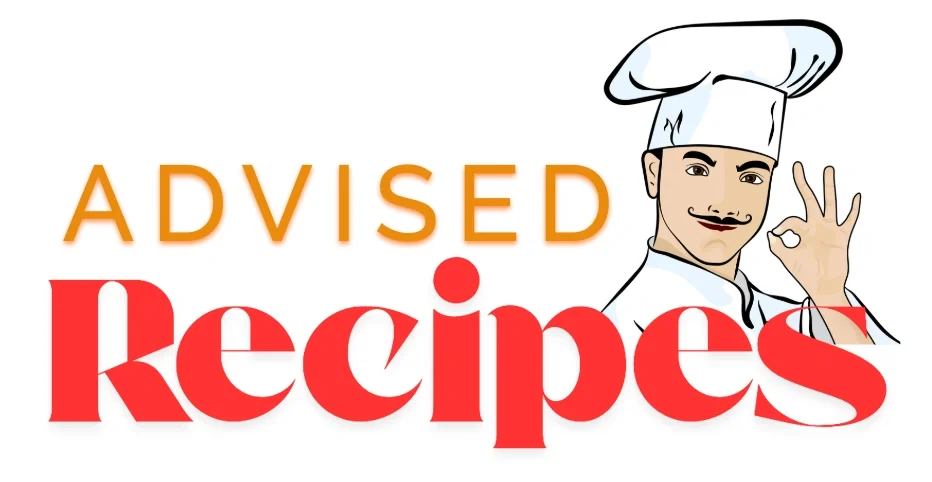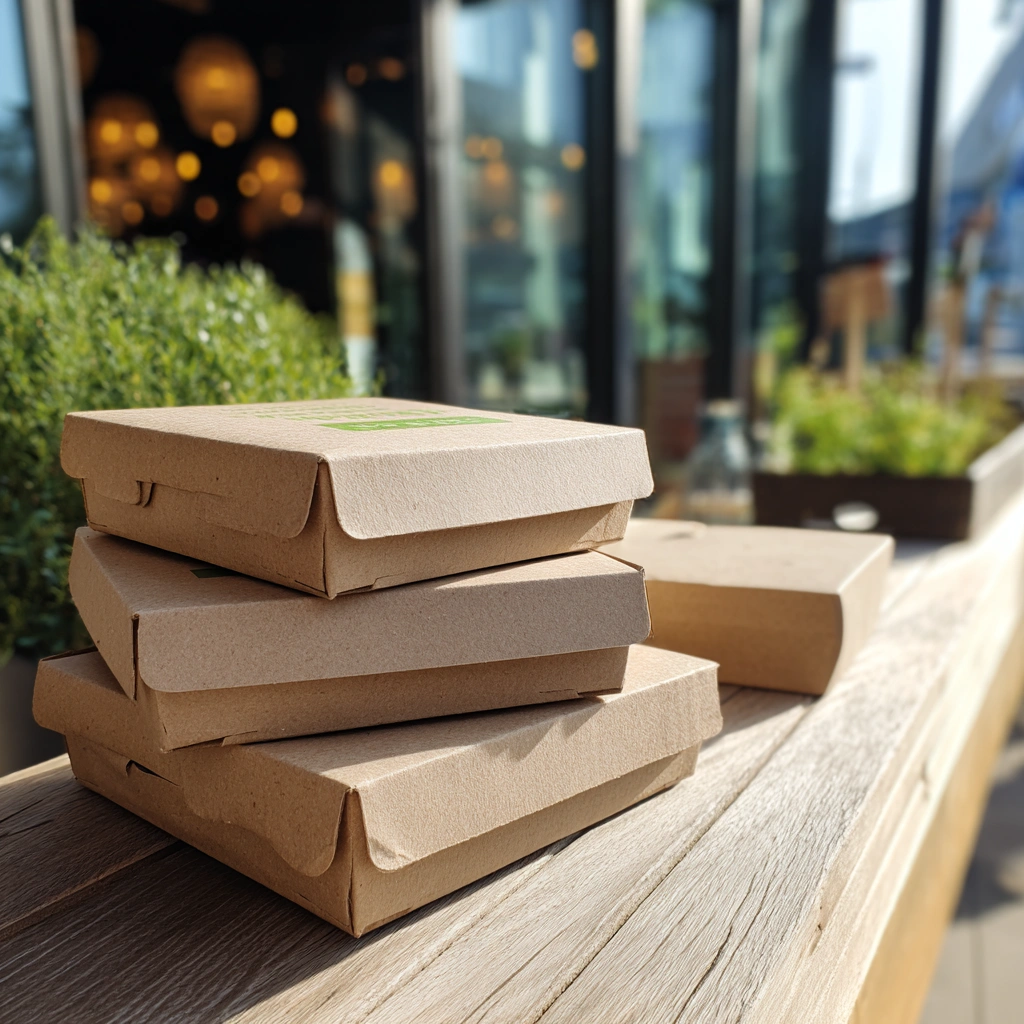Burger boxes were never something I thought much about—until the day I packed my very first homemade smash burger for a friend. I had just started experimenting beyond simple recipes, and while the flavors were on point, the soggy mess that arrived on their plate? Not so much. That was the moment I realized: packaging matters as much as seasoning.
From that small kitchen slip came a big obsession—with finding the best burger boxes for freshness, structure, and even style. In this guide, I’ll walk you through everything I’ve learned—from the different types of burger boxes, eco-friendly packaging options, and branding hacks, to must-know innovations and real-life case studies. So, if you’re a curious cook or building your food business, you’ll see how the right burger box can transform your burger from good… to unforgettable.
Table of Contents
Understanding the Role of Burger Boxes in Food Packaging
The Evolution of Burger Packaging: From Wrapper to Box
Back in the day, burgers were handed off in wax paper or foil—easy, but messy. These materials couldn’t hold heat well or protect the burger’s shape during delivery. As food culture evolved, especially with takeout trends, smarter packaging became a necessity.
Today’s containers are designed to protect both flavor and structure. Whether you’re stacking gourmet layers or keeping it simple, using the right packaging means your burger arrives just as it left the grill. Even unique creations like our peanut butter and jelly burger need the right fit to stay intact and appetizing.
Why Packaging Quality Impacts the Entire Experience
Good food deserves great presentation. High-performing containers help preserve freshness, prevent sogginess, and maintain the visual appeal. Features like vented lids and grease-resistant lining are no longer extras—they’re essentials.
This is especially true for specialty options like our Truffle Smash Burger, where a soggy box could ruin the whole experience. When the packaging works, your burger speaks for itself—crispy lettuce, juicy patty, and all.
Types of Burger Boxes Used in the Industry
Single-Burger Boxes vs. Multi-Compartment Containers
Not all burger boxes serve the same purpose. For basic takeout, a single-compartment box does the job. But for loaded burgers with sides like fries or pickles, dual-compartment containers prevent sogginess and help with presentation.
Restaurants offering premium stacks—like our Hangover Burger with no bacon—often need larger, vented containers that hold structure and heat better.
Packaging Materials: Paperboard, Kraft, and Biodegradable Options
The most common materials include recyclable paperboard, natural Kraft paper, and eco-friendly compostables. Some vendors still use foam or plastic, but these options are falling out of favor due to environmental concerns.
Sustainable choices are trending, especially among brands looking to reduce waste. If you’re creating something special like a Black Angus beef burger, eco-friendly packaging can add value without compromising quality.
Eco-Friendly Burger Boxes: Sustainable Choices That Matter
Compostable and Biodegradable Options on the Rise
As more food creators move toward sustainable practices, eco-friendly burger boxes have become essential. Compostable containers made from sugarcane, bamboo, or Kraft paper offer a clean, sturdy alternative to plastic—and they break down naturally, reducing waste.
Eco boxes pair especially well with clean-label creations like our Kobe Burger, where customers expect sustainability from start to finish.
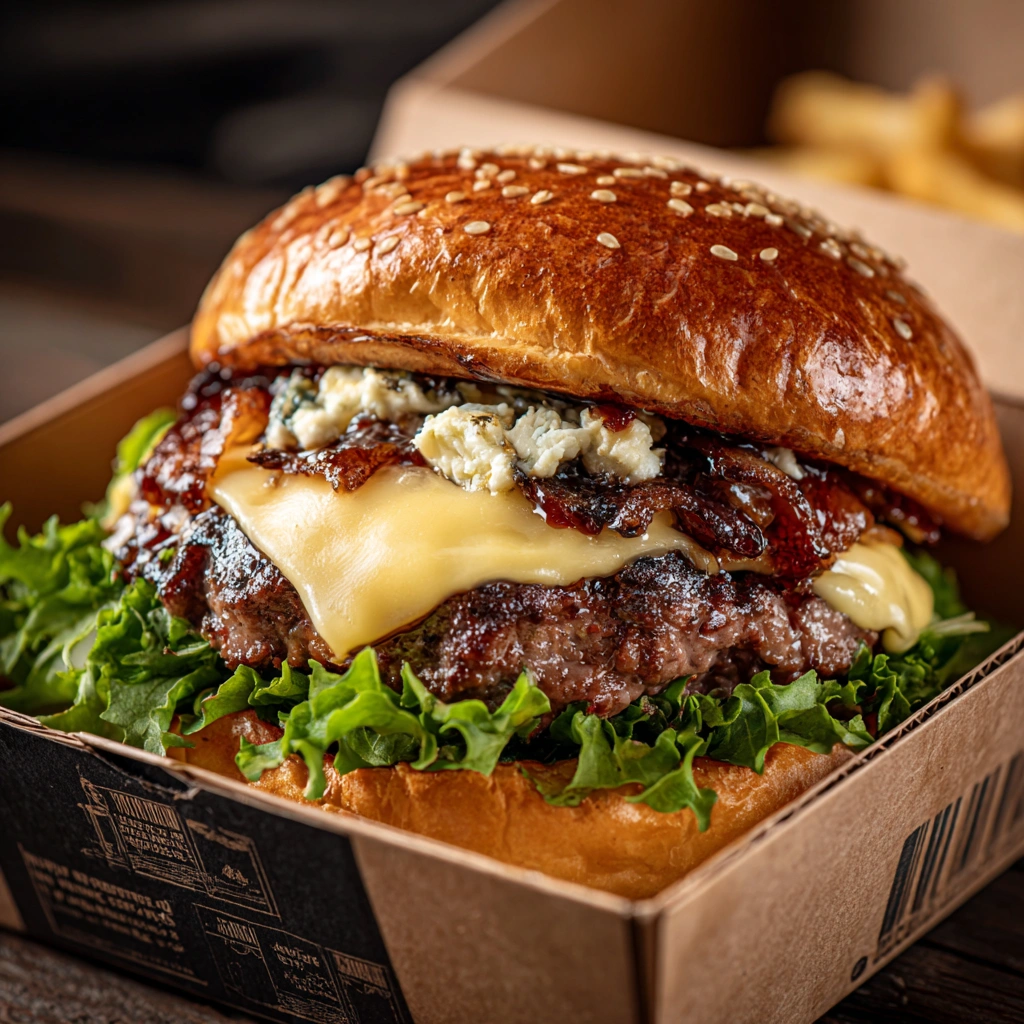
Why Going Green Pays Off for Your Brand
Using earth-conscious packaging doesn’t just benefit the planet—it builds trust with customers. Diners are more likely to return when they feel their choices support their values.
If you’re serving up something creative like our PB and J Burger, presenting it in recyclable or biodegradable packaging shows care for both quality and the environment.
Burger Boxes for Branding and Marketing Impact
Custom Printed Packaging Builds Brand Identity
For food businesses, burger boxes do more than carry food—they carry your image. Branded boxes with logos, taglines, or even QR codes can leave a lasting impression. Packaging that looks sharp signals professionalism and pride in your product.
Look at the presentation of our Steakhouse Burger: the right box would highlight its upscale vibe before the first bite. It’s all part of the experience.
How Packaging Shapes Customer Perception
First impressions matter, especially in delivery or takeout. A well-designed burger box gives your meal a polished look and reassures customers that care went into every layer—even beyond the patty.
Even fun recipes like the Carl’s Jr. Hangover Burger feel more satisfying when delivered in packaging that’s clean, secure, and on-brand.
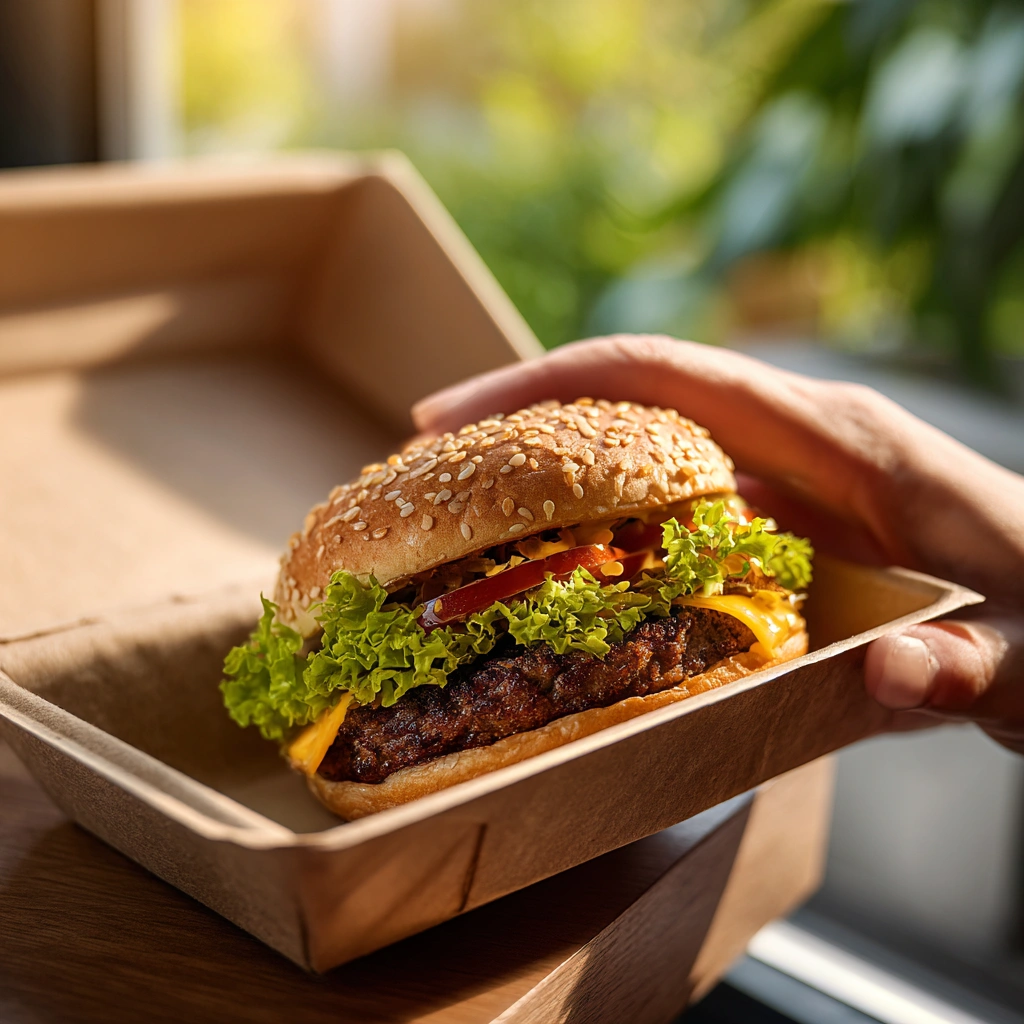
Choosing the Right Size and Design of Burger Boxes
Standard Sizes vs. Custom-Fit Options
Not all burger boxes are created equal. Using the wrong size can crush your creation or leave too much space, causing the burger to slide. Standard sizes work for classic recipes, but gourmet builds—like our Truffle Burger—deserve a custom-fit box to protect every layer.
When you’re serving oversized patties or double-stacks, it’s worth investing in packaging that matches the burger’s scale.
Smart Features That Make a Difference
Modern designs offer greaseproof liners, locking flaps, and vented lids. These features help maintain texture, especially for saucy builds like the PBJ Burger, where keeping bread from going soggy is crucial.
Thoughtful box design doesn’t just preserve quality—it enhances the eating experience from start to finish.
Cost-Effective Burger Box Solutions for Restaurants
Balancing Budget and Quality in Packaging
For many food businesses, finding burger boxes that are both affordable and functional is a top priority. Cutting costs shouldn’t mean sacrificing quality—especially when a poorly built box can ruin a customer’s first impression.
Take, for instance, a build like our Carls Jr. Hangover Burger Girl. It needs a strong, leak-resistant box to travel well and stay Instagram-worthy. Cheap packaging just won’t cut it for messy, flavorful stacks.
Sourcing Smart: Wholesale vs. Local Distributors
Buying in bulk from reliable suppliers can reduce cost per unit significantly. Some restaurants prefer local distributors for fast delivery, while others opt for national vendors with custom printing options.
Burgers with a twist—like our Hangover Burger—are perfect examples of how the right packaging investment can protect flavor, save money long-term, and improve customer satisfaction.
Best Practices for Storing and Transporting Burgers in Boxes
Preserving Heat, Shape, and Flavor on the Move
In the era of delivery and takeout, choosing the right burger boxes can make or break the eating experience. Good packaging keeps your burger warm, holds its structure, and prevents sauces from soaking through.
For example, burgers like the Burger King Double Cheeseburger need compact, well-vented containers to avoid becoming soggy or cold during transport.
Matching Box Design to Dining Format
The ideal box depends on how the burger is served—dine-in, takeout, or catering. Ventilation is key for crispy textures, while locking tabs prevent messes in transit. A solid box ensures even layered burgers like our PB and J Burger arrive as intended: stacked, flavorful, and photo-ready.

Innovations in Burger Packaging You Should Know About
Smart Features Taking Over the Industry
Today’s burger boxes go far beyond basic containers. Some now include QR codes for digital menus, temperature-sensitive labels, or even AR experiences to boost engagement. These extras aren’t just trendy—they’re strategic.
For high-end builds like our Truffle Smash Burger, innovative packaging can elevate the meal’s perceived value and delight customers in new ways.
Engineering Better Heat and Leak Control
New materials and box structures are being designed to trap heat without trapping moisture. Leak-proof linings and double-seal flaps are now standard for messy, saucy builds like the Peanut Butter and Jelly Burger, helping the burger arrive fresh—not flattened or soggy.
Case Studies and Real-Life Burger Box Success Stories
Truffle Burgers That Demand Premium Packaging
When it comes to premium burgers, presentation makes a big difference. Our Truffle Burger uses rich ingredients that need structured, vented burger boxes to keep toppings in place and the bun from going soggy. The right box doesn’t just protect—it enhances the upscale vibe.
Hangover Burgers: Built for Boldness, Packaged for Performance
Bold burgers like the Hangover Burger No Bacon are stacked high and packed with flavor. Without durable, grease-resistant burger boxes, these creations would fall apart before reaching the customer. Brands that invest in the right packaging turn repeat messes into repeat sales.
FAQs About Burger Boxes
What materials are burger boxes made of?
Most burger boxes are made from paperboard, Kraft paper, or biodegradable materials like sugarcane pulp. Some use plastic or foam, though eco-conscious brands now prefer sustainable options. For example, our Kobe Burger pairs well with natural, grease-resistant packaging that matches its quality.
Are burger boxes recyclable or compostable?
Yes, many modern boxes are recyclable or compostable. Look for certifications like FSC or labels stating “compostable.” This is especially important when packaging environmentally-conscious creations like the PB and J Burger.
How can custom burger boxes boost a brand?
Branded boxes make a strong first impression. Custom printing helps reinforce your logo, tone, and values while building trust and recognition.
What size burger box do I need?
It depends on your burger’s size and structure. Standard sizes fit single patties, but gourmet or loaded burgers need extra room and support.
Are there microwave-safe burger boxes?
Some paper-based boxes are microwave-safe, especially if they’re free from wax or plastic linings. Always check the labeling.
Where can I buy burger boxes in bulk?
Packaging wholesalers and online stores offer bulk deals. Look for vendors that let you customize sizes and materials for your menu style.
Conclusion
Choosing the right burger boxes is more than a packaging decision—it’s a way to protect your food, reflect your brand, and meet customer expectations. Whether you’re crafting a gourmet Truffle stack or a comfort classic like the Steakhouse Burger, the right box keeps it hot, structured, and ready to impress.
From eco-friendly materials to smart designs and bold branding, burger boxes shape the full experience. Want to see how creative burger ideas pair with the perfect presentation? Check out our history of burgers to explore how packaging evolved alongside flavor.
Print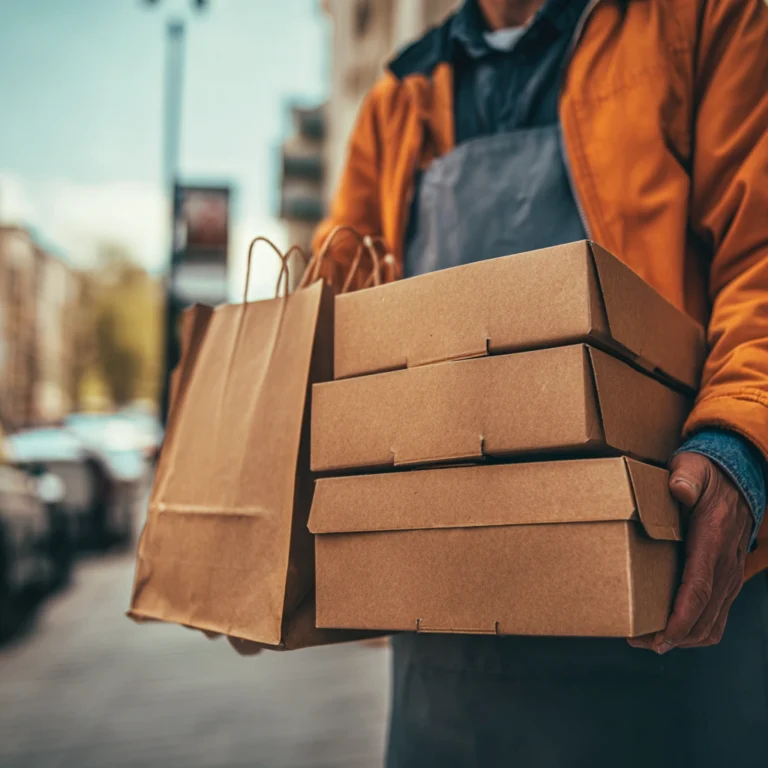
Burger Boxes 101: How Smart Packaging Can Elevate Your Burger Game
Discover how the right burger box can preserve flavor, protect structure, and elevate presentation. From eco-friendly options to smart features and branding power, this guide explores everything you need to know to choose the perfect burger packaging.
- Total Time: 0 minutes
- Yield: N/A
Ingredients
- No specific ingredients – this is an informational guide on burger packaging.
Instructions
- Understand the importance of quality burger packaging in preserving taste and structure.
- Learn about different types of burger boxes and which burgers they suit best.
- Explore eco-friendly materials such as Kraft, sugarcane, and biodegradable options.
- Discover how custom branding can enhance customer perception.
- Choose the right size and design to fit your burger’s structure and content.
- Find cost-effective sources and strategies for purchasing burger boxes in bulk.
- Follow best practices for heat retention, leak control, and safe transport.
- Stay updated with packaging innovations like QR codes and AR experiences.
- Review case studies highlighting how premium packaging drives brand success.
Notes
This guide is ideal for chefs, restaurant owners, and food entrepreneurs looking to improve takeout quality, sustainability, and customer experience through smart burger packaging.
- Prep Time: 0 minutes
- Cook Time: 0 minutes
- Category: Informational Guide
- Method: No Cook
- Cuisine: American
Nutrition
- Serving Size: N/A
- Calories: 0
- Sugar: 0g
- Sodium: 0mg
- Fat: 0g
- Saturated Fat: 0g
- Unsaturated Fat: 0g
- Trans Fat: 0g
- Carbohydrates: 0g
- Fiber: 0g
- Protein: 0g
- Cholesterol: 0mg
